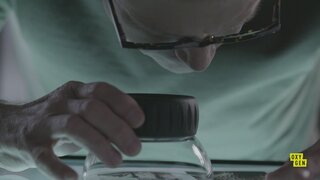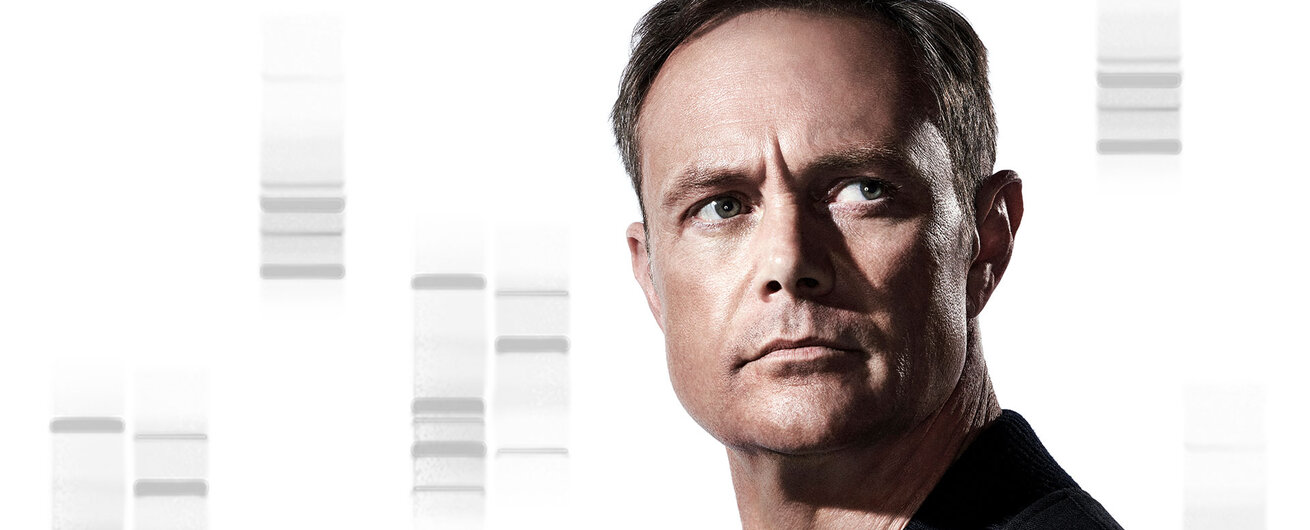Create a free profile to get unlimited access to exclusive videos, breaking news, sweepstakes, and more!
8 Decades-Old Cold Cases That Got Big Breaks Thanks To Forensic Genealogy
From the Golden State Killer to the Grim Sleeper, these cold cases heated up with breakthroughs in forensic genealogy.

Since forensic DNA testing was first used in 1986 to secure the conviction of British rapist and murderer Colin Pitchfork, it has played a part in thousands upon thousands of criminal cases.
While investigators were initially only able to identify a perpetrator or victim through a direct DNA sample, recent technological breakthroughs have allowed law enforcement to create suspect profiles through familial DNA links using genetic genealogy databases.
In 2018 alone, suspects were identified in 28 cold cases — most notably Golden State Killer suspect Joseph DeAngleo, who is accused of terrorizing California in the 1970s and 1980s.
Here are eight other decades-old cases that have heated up thanks to forensic genealogy.
The Rape and Murder of Susan Galvin (1967)
Susan Galvin was a 20-year-old records clerk working for the Seattle Police Department when her body was found in a parking garage elevator. She had been raped and strangled, according to the Associated Press. Her killer’s DNA was extracted from her clothing in 2002, and when it was uploaded to public genealogy database GEDmatch last year, it was a partial match to two distant cousins.
Genealogical mapping eventually led investigators to Frank Wypych, a 26-year-old security guard at the time of Galvin’s death. Wypych, who served time for larceny and was arrested for impersonating a police officer in the 1970s, died in 1987 from complications from diabetes, according to local CBS affiliate KIRO7.
His body was exhumed in 2019, and DNA extracted from his remains was a complete match to the sample found on Galvin’s clothing.
The Rape and Murder of Jody Loomis (1972)
Jody Loomis, 20, was riding her bicycle on a rural path in Everett, Washington, when she was raped and shot in the back of the head. Semen was found on one of her boots, and more than four decades later, it was uploaded to GEDmatch, which found a link to a large family based in nearby Edmonds.
Police soon focused in on Terrence Miller, 77, who had been accused of numerous sex crimes, according to charging papers cited by Seattle Weekly. Miller was placed on surveillance, and when police observed him throw out a disposable coffee cup, they retrieved it and extracted his DNA.
The sample was a match to that found on Loomis’ shoe. Miller, who was 30 at the time of Loomis’ murder, was arrested in April 2019 and charged with first-degree murder. He has pleaded not guilty and is currently on house arrest after posting $1 million bail, according to the Seattle Times.
The BTK Killer (1974 - 1991)
While most forensic familial DNA investigations try to identify an unknown perpetrator from a similar genetic profile, in the case of “BTK Killer” Dennis Rader, police thought they had found their man and just needed the DNA to prove it.
After communications from the BTK Killer were traced to Rader in the early 2000s, police got a warrant to obtain one of his daughter’s pap smears, which she had taken while a student at Kansas State University, according to the Washington Post. After confirming a familial match to DNA found at several of the BTK Killer’s crimes scenes, police secured Rader’s arrest warrant.
Rader was sentenced to a minimum of 175 years in prison without a chance of parole after pleading guilty to 10 murders, according to NBC News.
The Golden State Killer (1976 - 1986)
Through DNA testing in 2001, it was revealed that 50 rapes and 13 murders that occurred in California over the course of 12 years were all committed by the same person. The combined crimes, which authorities had previously assumed were committed by two separate perpetrators, were then attributed to a man dubbed by crime writer Michelle McNamara as “The Golden State Killer.”
In early 2018, police created a fake profile and uploaded DNA from one of the crime scenes to GEDmatch, an online database that found a mutual descendant of his great-great-great grandparents. It would take investigators months to construct the family tree that led them to suspect Joseph James DeAngelo, a former police officer in his early 70s.
After clandestinely obtaining his DNA and finding it to be a complete match, he was taken into custody that April. DeAngelo has been charged with 13 counts of murder, including murder committed during the course of a burglary and rape, and 13 counts of kidnapping for robbery. Prosecutors intend to seek the death penalty, according to NBC News.
The Rape and Murder of Anna Marie Hlavka (1979)
The body of Anna Marie Hlavka, 20, was discovered by her sister in their Portland, Oregon, apartment in 1979. Despite a thorough investigation, no arrests were ever made. More than three decades later, a full DNA profile of her killer was lifted from fingernail scrapings. No matches in existing offender databases, however, were found.
Inspired by the Golden State Killer suspect arrest, cold case detectives began looking for a familial DNA match in 2018. They eventually discovered Hlavka’s murderer was Jerry "Animal" McFadden, a serial rapist and murderer who was put to death in 1999 for the slaying of an 18-year-old high school cheerleader, according to the Oregonian newspaper.
The Grim Sleeper (1985 - 2007)
Operating at the height of the 1980s crack epidemic in Los Angeles, the Grim Sleeper murdered at least 10 women before going underground for 10 years. When he resurfaced in the early 2000s, L.A. Weekly broke the story, giving the killer a name and documenting investigators’ efforts to identify him through familial DNA.
Law enforcement made a break in the case with unintentional assistance from a man named Christopher Franklin, who was convicted on a felony weapons charge in 2009. During his incarceration, a DNA sample was taken, and it was a close match to the Grim Sleeper.
Police began investigating Christopher’s father, Lonnie David Franklin Jr., and they would later retrieve DNA evidence from his discarded food and dishes. The samples matched those that were retrieved from several victims’ bodies.
Franklin was arrested in 2010, and six years later, he was convicted on 10 counts of first-degree murder and condemned to execution by lethal injection, according to Reuters.
The Abduction and Murder of April Tinsley (1988)
April Tinsley was just 8 years old when she vanished in 1988 while walking home from a friend’s house in Fort Wayne, Indiana. A jogger found her body in a ditch three days later. She had been raped and suffocated, according to local ABC affiliate WPTA21.
The killer taunted the police and media years later, leaving used condoms and notes that detailed the murder on several girls’ bicycles around Fort Wayne. DNA in the condoms matched the evidence found in Tinsley’s underwear, reported The Washington Post.
Police later sent the killer’s DNA to Parabon NanoLabs, which compared it to genetic profiles on several genealogical websites. The DNA sample was eventually narrowed down to two brothers living in a trailer park, and investigators began monitoring one of them — John D. Miller.
After retrieving used condoms from his trash, police tested his DNA and found it was an exact match to Tinsley’s killer. When police approached Miller, they asked if he knew what they wanted to talk about, and he responded, “April Tinsley,” according to BBC News.
Miller pleaded guilty to murder and child molestation and was sentenced to 80 years in prison, according to the Indianapolis Star newspaper.
The Daytona Beach Killer (2005 - 2016)
In late 2005, a serial killer began preying on sex workers in and around Daytona Beach, Florida, shooting them to death and dumping their bodies in public places. While investigating the 2016 sexual assault and murder of Rachel Bey, law enforcement pulled DNA evidence from her body and looked for a familial match of the suspect through genealogical databases.
Their search led them to former criminal justice student Robert Tyrone Hayes, 37. Hayes was placed under surveillance, and DNA found on a discarded cigarette butt linked him to Bey’s murder. DNA and other forensic evidence also linked him to three murders from 2005 and 2006, according to CNN.
Hayes was arrested on Sept. 15, 2019, and charged with first-degree murder for Bey’s death. He is currently being held without bail, according to The Palm Beach Post.
For more cold case investigations, follow Paul Holes as he explores the physical and emotional "DNA" of crime scenes in "The DNA of Murder with Paul Holes" on Oxygen.





























